All issues

Volume 23 (1988)
- Issue 6 Pages 334-
- Issue 5 Pages 249-
- Issue 4 Pages 173-
- Issue 3 Pages 117-
- Issue 2 Pages 71-
- Issue 1 Pages 1-
Volume 23, Issue 2
Displaying 1-8 of 8 articles from this issue
- |<
- <
- 1
- >
- >|
-
Minoru SUZUKI, Youichi ENOMOTO, Toshiaki MURAKAMI1988 Volume 23 Issue 2 Pages 71-77
Published: April 25, 1988
Released on J-STAGE: February 26, 2010
JOURNAL FREE ACCESSThe present state of technologies for thin film preparation of high Tc oxide superconductors, (La, Sr)2CuO4 and Ba2YCu3O7-y, is reviewed with a special attention to the vacuum evaporation and sputtering method. The epitaxial thin film growth is also stated from the point of view of substrate materials. Finally, some anisotropic properties of epitaxially grown Ba2YCu3O7-y thin films are remarked.View full abstractDownload PDF (1261K) -
Yoshihide WADAYAMA, Toshimi MATSUMOTO, Hiroshi SATOH, Hideaki TAKAHASH ...1988 Volume 23 Issue 2 Pages 78-84
Published: April 25, 1988
Released on J-STAGE: February 26, 2010
JOURNAL FREE ACCESSThis investigation has been carried out to determine the influence of specimen size and side groove depth on elastic-plastic fracture toughness parameters. Elastic-plastic fracture toughness JIC and tearing modulus Tmat were evaluated by the unloading compliance method which was described in ASTM E813-81 standards. Compact tension specimens were prepared from SUS316LN and the test were conducted at cryogenic temperature 4.2K. It is understood that JIC and Tmat are independent of specimen size when the specimen satisfies ASTM standard size requirements. JIC and Tmat decrease with the increase of side groove depth for 0-12.5% of original thickness, and they are independent of side groove depth when the depth is 12.5-37.5%. These results suggest that a 0.5CT small specimen with 25% side grooves can provide proper JIC and Tmat values independent of specimen size and side groove depth.View full abstractDownload PDF (1137K) -
Hisayasu KOBAYASHI, Hiroyuki FUKUDA, Taturou TOMIOKA1988 Volume 23 Issue 2 Pages 85-89
Published: April 25, 1988
Released on J-STAGE: February 26, 2010
JOURNAL FREE ACCESSWe have investigated preliminarily the heat transfer characteristics in hybrid cooling in which one of the heated surfaces of a conductor is cooled by saturated He II (He IIs) and the other side of the surfaces simultaneously cooled by pressurized HeII (He IIp). Not that the transition to the film boiling state in the hybrid cooling is dominated by lower peak heat flux in He IIs, but that the observed peak heat flux was close to the average value of those obtained in He IIs and He IIp each. The mechanism of the transition to the film boiling state is explained by the super-heating and the temperature fluctuation between the double transition peculiar to the hybrid cooling.View full abstractDownload PDF (867K) -
Shuichiro FUCHINO, Noriharu TAMADA, Sakutaro TOMIYAMA1988 Volume 23 Issue 2 Pages 90-95
Published: April 25, 1988
Released on J-STAGE: February 26, 2010
JOURNAL FREE ACCESSForced flow superfluid helium circulation system has been developed. Steady state temperature distribution and transient thermal propagation behavior along the cooling channel have been investigated. The results are analyzed on the basis of the energy equation using Gorter-Mellink relation. Thermal oscillations occurred in this system are analyzed and suppressed successfully.View full abstractDownload PDF (939K) -
Mitsumasa SUZUKI, Masahiro BABA, Michio SATO, Takeshi ANAYAMA, Kazuo W ...1988 Volume 23 Issue 2 Pages 96-102
Published: April 25, 1988
Released on J-STAGE: February 26, 2010
JOURNAL FREE ACCESSNbN films with B1 structure have been investigated on their superconducting critical temperature Tc, upper critical field Hc2 and field dependent critical current density Jc. NbN has been formed on quartz and sapphire substrates heated up to a temperature between 200 and 700°C in an argon-nitrogen atmosphere by rf sputtering from a Nb disk target. The film thickness ranges from 1, 500 to 6, 000Å. The Tc of films is strongly influenced by one of deposition parameters, the nitrogen partial pressure PN2. With increasing PN2 from 1m Torr, the Tc rapidly increases. The maximum Tc in excess of 16K is obtained around PN2=4m Torr. A further increase of PN2 provides a slight decrease of Tc and causes an appreciable increase of the normal state resistivity ρn which is closely related to the Hc2 of films. Most films deposited at PN2 higher than 4m Torr show a single B1 phase and exhibit a strong anisotropy of Hc2. The upper critical fields perpendicular to the film plane (Hc2⊥) are lamer than those parallel (Hc2_??_). Ratios of Hc2_??_ to Hc2⊥ are in the range from -0.72 to -0.85 and are smaller for films deposited on quartz. Both kinds of films deposited on sapphire and quartz show similar relationships between Hc2 and ρn. The Hc2 increases with ρn in a range of below 500μΩcm. High values of Hc2 are obtained in films with ρn above 500μΩcm and with Tc of 14-15K. The maximum values of Hc2⊥ and Hc2_??_ are to -30T and -25T, respectively. NbN films with a ρn of -1, 000μΩcm maintain high Jc in fields higher than 10T. The highest values of Jc at 15T reach 1.0×105A/cm2 for the parallel field direction and 5×105A/cm2 for the perpendicular field direction.View full abstractDownload PDF (1287K) -
1988 Volume 23 Issue 2 Pages 116c
Published: 1988
Released on J-STAGE: February 26, 2010
JOURNAL FREE ACCESSDownload PDF (144K) -
1988 Volume 23 Issue 2 Pages 116b
Published: 1988
Released on J-STAGE: February 26, 2010
JOURNAL FREE ACCESSDownload PDF (144K) -
Erratum to : Development of Compact Synchrotron Radiation Rings and Associated Problems to Be Solved1988 Volume 23 Issue 2 Pages 116a
Published: 1988
Released on J-STAGE: February 26, 2010
JOURNAL FREE ACCESSDownload PDF (144K)
- |<
- <
- 1
- >
- >|